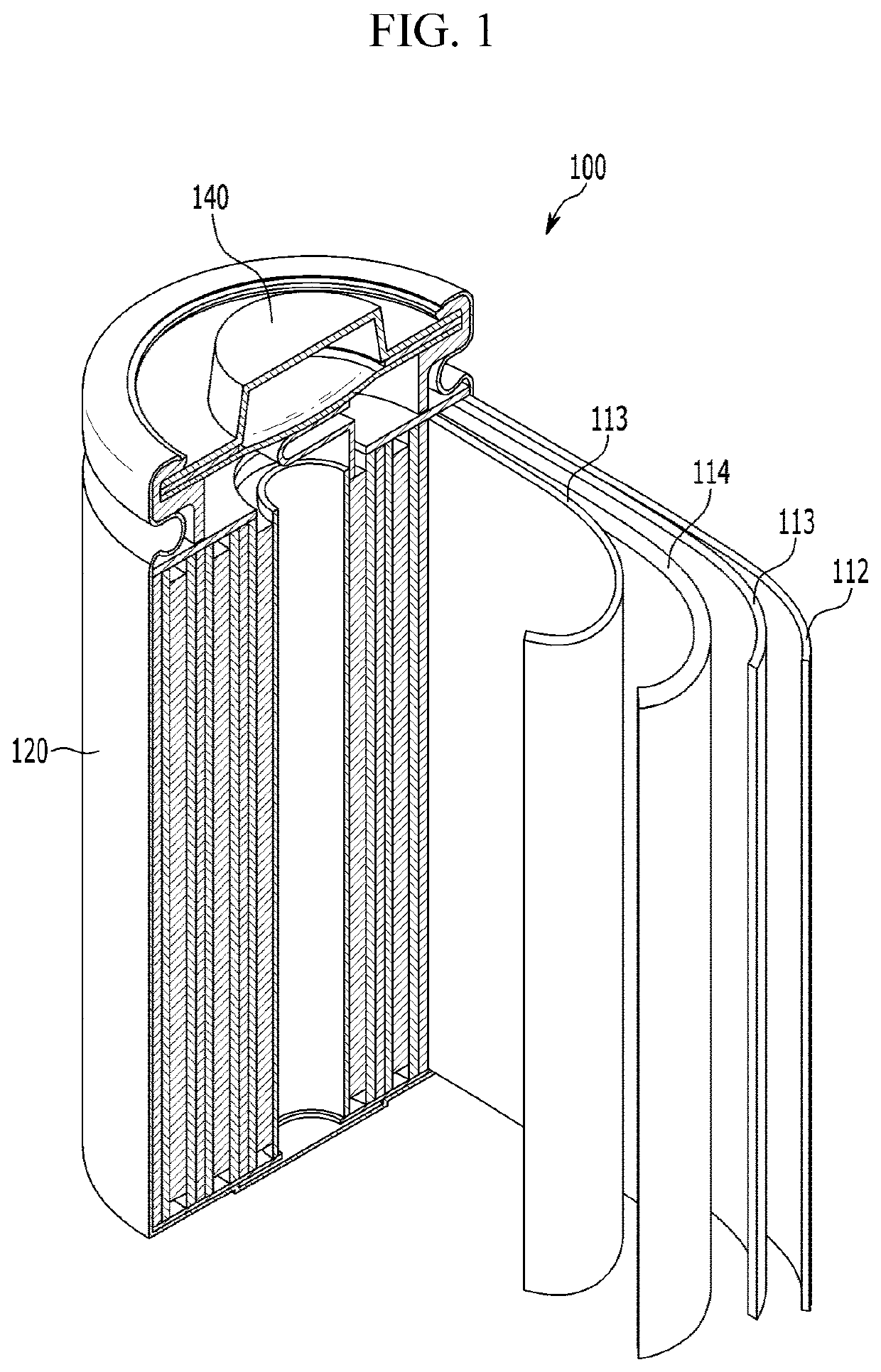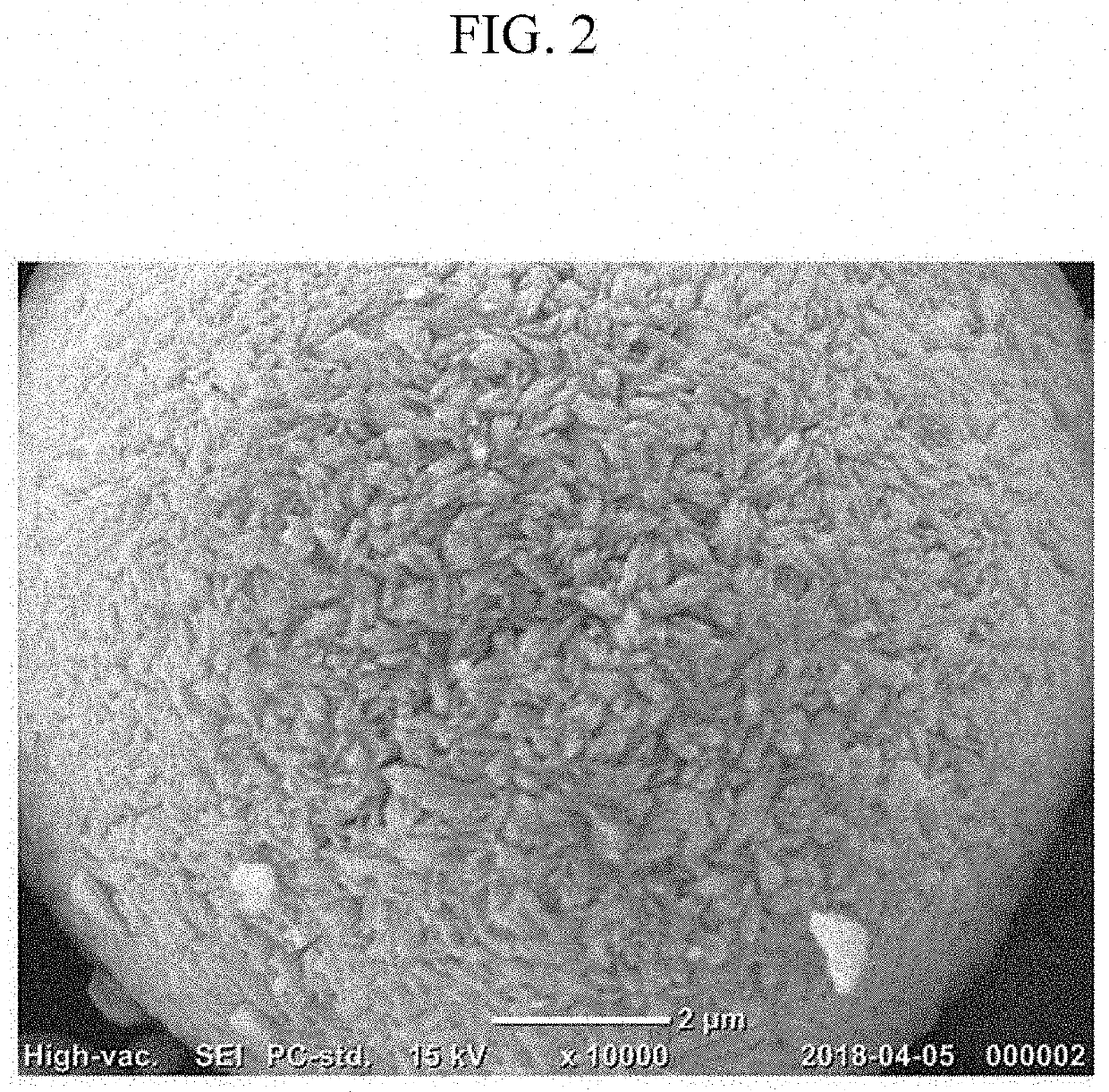Cathode active material for lithium secondary battery, preparation method therefor, and lithium secondary battery comprising same
a lithium secondary battery and active material technology, applied in the field of cathode active material for lithium secondary batteries, can solve the problems of low thermal stability, difficult commercialization, deterioration of capacity, etc., and achieve the effect of excellent discharge capacity and low initial resistan
- Summary
- Abstract
- Description
- Claims
- Application Information
AI Technical Summary
Benefits of technology
Problems solved by technology
Method used
Image
Examples
preparation example 1
er Active Material Hydroxide Precursor
[0116]1) Preparation of Metal Salt Solution
[0117]Two metal salt aqueous solutions having different Ni, Co, and Mn concentrations were prepared by adding NiSO4.6H2O as a nickel raw material, CoSO4.7H2O as a cobalt raw material, and MnSO4.H2O as a manganese raw material to deionized water and dissolving them therein.
[0118]The first metal salt aqueous solution for forming a core portion was prepared by mixing the raw materials in the deionized water to satisfy a stoichiometric mole ratio of (Ni0.98Co0.01Mn0.01)(OH)2, so that total metal salts thereof might have a molar concentration of 2.5 M.
[0119]Independently, the second metal salt aqueous solution for a shell portion was prepared by mixing the raw materials in the deionized water to satisfy a stoichiometric mole ratio of (Ni0.64Co0.23Mn0.13)(OH)2, so that the total metal salts thereof might have a molar concentration of 2.5 M.
[0120]2) Co-Precipitation Process
[0121]A co-precipitation reactor havi...
preparation example 2
er Cathode Active Material Hydroxide Precursor
[0128]1) Preparation of Metal Salt Solution
[0129]The same first and second metal salt aqueous solutions as those of Preparation Example 1 were prepared.
[0130]2) Co-Precipitation Process
[0131]The same reactor as used in Preparation Example 1 was used under the same conditions as above except that the input time and amount of each metal salt solution were changed.
[0132]Specifically, while the first metal salt aqueous solution was put at 0.3 L / time, the impeller speed of the reactor was adjusted into 140 rpm to perform a co-precipitation reaction until precipitates had a diameter of about 15.0 μm. Herein, the solution was controlled to reside in the reactor for 15 hours or more at average by adjusting the flow rate, and after a reaction reached a steady state, the reactants were allowed to a little longer stay in the steady state to obtain a denser co-precipitation compound.
[0133]Subsequently, a mixing ratio of the first and second metal sa...
preparation example 3
Particle Diameter Oxide Precursor
[0136]The precursor having the core-shell concentration gradient large particle diameter (Ni0.88Co0.095Mn0.025)(OH)2 composition according to Preparation Example 1 was charged in a heat treatment furnace and then, heat-treated, while an air atmosphere was introduced thereinto at 200 mL / min, to prepare a large particle diameter porous Ni0.88Co0.095Mn0.025O2 oxide precursor. The heat treatment process was performed by increasing a temperature at 2.5° C. / min up to 700° C. and maintaining it at 700° C. for 5 hours.
PUM
| Property | Measurement | Unit |
|---|---|---|
| particle diameter | aaaaa | aaaaa |
| temperature | aaaaa | aaaaa |
| average particle diameter | aaaaa | aaaaa |
Abstract
Description
Claims
Application Information
 Login to View More
Login to View More - R&D
- Intellectual Property
- Life Sciences
- Materials
- Tech Scout
- Unparalleled Data Quality
- Higher Quality Content
- 60% Fewer Hallucinations
Browse by: Latest US Patents, China's latest patents, Technical Efficacy Thesaurus, Application Domain, Technology Topic, Popular Technical Reports.
© 2025 PatSnap. All rights reserved.Legal|Privacy policy|Modern Slavery Act Transparency Statement|Sitemap|About US| Contact US: help@patsnap.com



